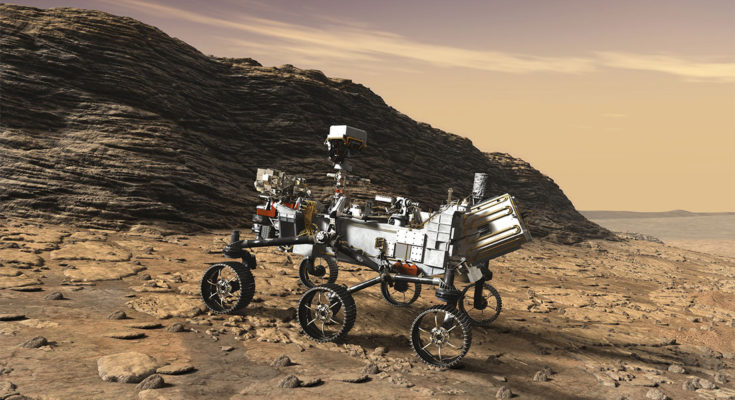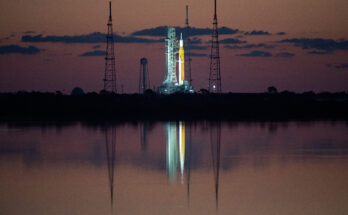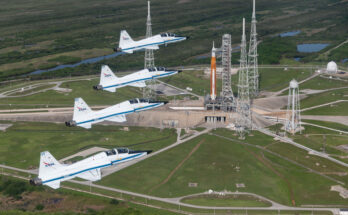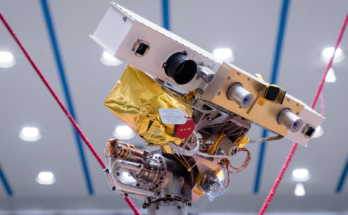Today, 18th February 2021 is going to be another historic day for NASA as their latest MARS exploration Rover lands on Mars today. The perseverance rover will be the fifth NASA rover to roam the red planet surface after Sojourner, Spirit, Opportunity and Curiosity rovers. Perseverance is the most sophisticated rover NASA has ever sent to the Red Planet. It is equipped with scientific instruments that have been developed with cutting edge technologies to perform some of the most advanced observations on Red planet surface. For the first time in history a special drone helicopter sent with the rover too will be hovering on Mars atmosphere soon.
Engineers at NASA’s Jet Propulsion Laboratory in Southern California, where the mission is managed, have confirmed that the spacecraft is healthy and on target to touch down in Jezero Crater at around 3:55 p.m. EST (12:55 p.m. PST) today.
Quick Facts
- Mission Name: Mars 2020
- Rover Name: Perseverance
- Main Job: Seek signs of ancient life and collect samples of rock and regolith (broken rock and soil) for possible return to Earth.
- Launch: July 30, 2020
- Landing: Feb. 18, 2021
- Landing Site: Jezero Crater, Mars
- Tech Demo: The Mars Helicopter is a technology demonstration, hitching a ride on the Perseverance rover.
- Size: 3 meters long, 2.7 meters wide, and 2.2 meters tall
- Weight: 1,025 kilograms
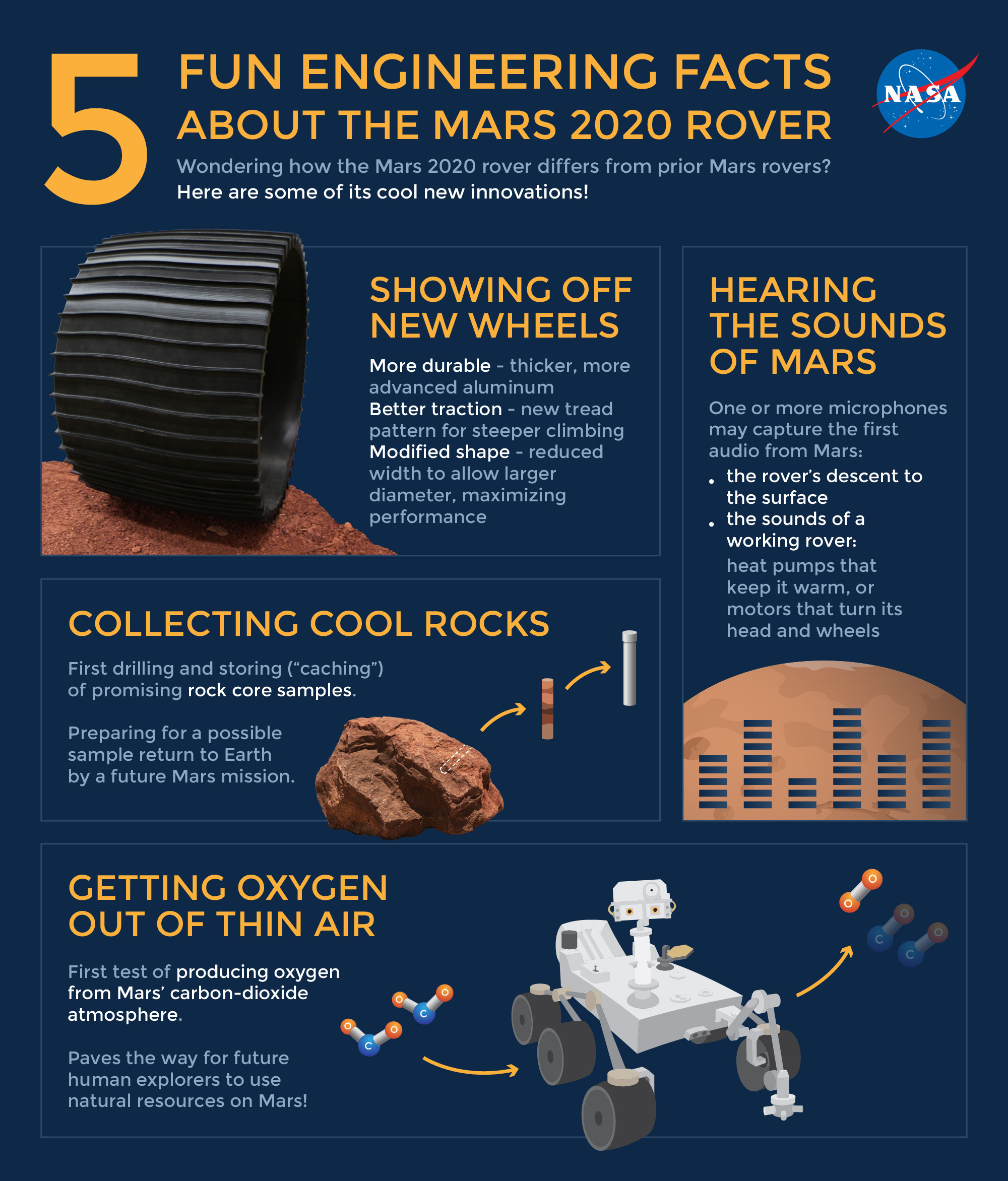
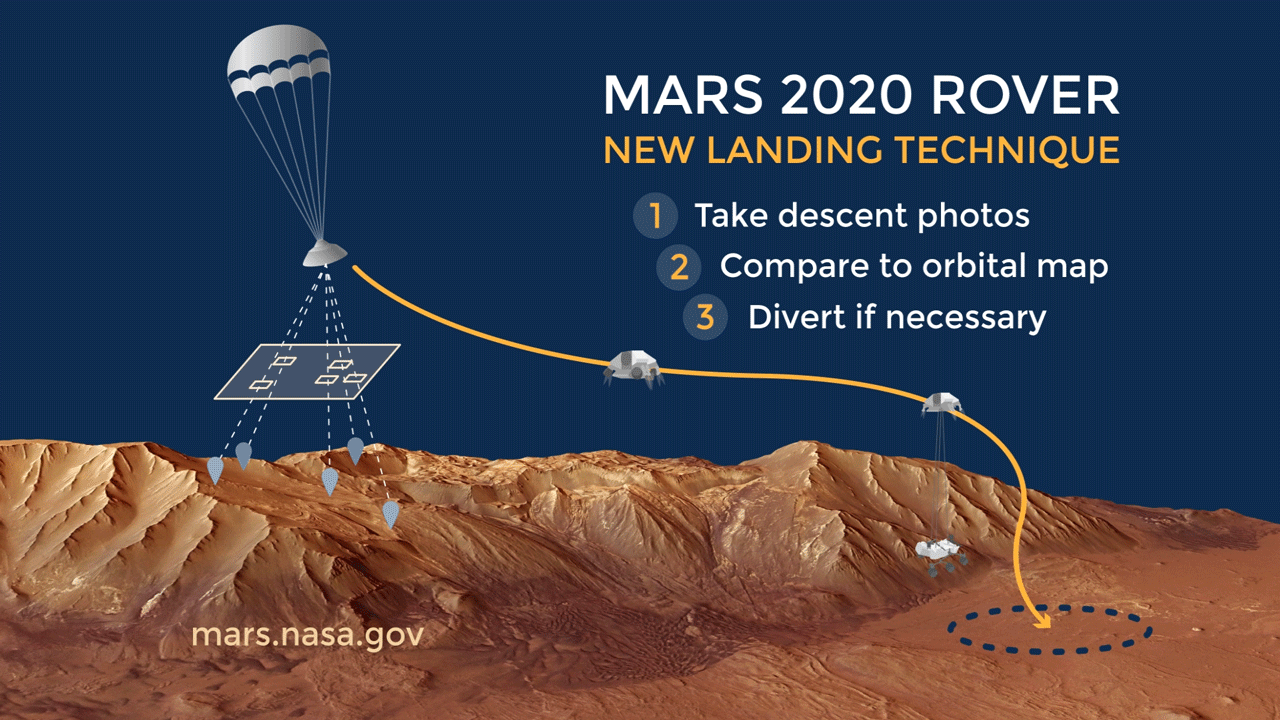
New Landing Technology
Unlike with previous rovers The Perseverance will be using a novel method to land on Mars. During the parachute assisted descent the space craft will take photos of the possible landing sites and will avoid any difficult terrains and using onboard rockets the lander will navigate itself to the best possible location from which the rover is to be lover to the surface using a sky crane. The video below from NASA demonstrate the landing technology.
Key points in this novel landing technique are as follows
– Cruise stage separation: The part of the spacecraft that has been flying Perseverance – with NASA’s Ingenuity Mars Helicopter attached to its belly – through space for the last six-and-a-half months will separate from the entry capsule.
– Atmospheric entry: The spacecraft is expected to hit the top of the Martian atmosphere traveling at about 12,100 mph (19,500 kph).
– Peak heating: Friction from the atmosphere will heat up the bottom of the spacecraft to temperatures as high as about 2,370 degrees Fahrenheit (about 1,300 degrees Celsius).
– Parachute deployment: The spacecraft will deploy its parachute at supersonic speed at around 3:52 p.m. EST (12:52 p.m. PST). The exact deployment time is based on the new Range Trigger technology, which improves the precision of the spacecraft’s ability to hit a landing target.
– Heat shield separation: The protective bottom of the entry capsule will detach about 20 seconds after the parachute deployment. This allows the rover to use a radar to determine how far it is from the ground and employ its Terrain-Relative Navigation technology to find a safe landing site.
– Back shell separation: The back half of the entry capsule that is fastened to the parachute will separate from the rover and its “jetpack” (known as the descent stage) at 3:54 p.m. EST (12:54 p.m. PST). The jetpack will use retrorockets to slow down and fly to the landing site.
– Touchdown: The spacecraft’s descent stage, using the sky crane maneuver, will lower the rover down to the surface on nylon tethers. The rover is expected to touch down on the surface of Mars at human walking speed (about 1.7 mph, or 2.7 kph).
Seven different instruments for Science
This rover is equipped with seven different instruments to carry out its scientific observations and explorations on the planet.
Mastcam-Z – An advanced camera system with panoramic and stereoscopic imaging capability and the ability to zoom. The instrument can also help scientists assess the mineralogy of the Martian surface and assist with rover operations.
Mars Environmental Dynamics Analyzer (MEDA) – A set of sensors to provide measurements of temperature, wind speed and direction, pressure, relative humidity and dust size and shape.
Mars Oxygen ISRU Experiment (MOXIE) – An exploration technology investigation to produce oxygen from Martian atmospheric carbon dioxide.
Planetary Instrument for X-ray Lithochemistry (PIXL) – An X-ray fluorescence spectrometer with high-resolution camera to determine the fine scale elemental composition of Martian surface materials. PIXL will provide capabilities that permit more detailed detection and analysis of chemical elements than ever before.
Radar Imager for Mars’ Subsurface Experiment (RIMFAX) – A ground-penetrating radar to provide centimeter-scale resolution of the geologic structure of the subsurface.
Scanning Habitable Environments with Raman & Luminescence for Organics & Chemicals (SHERLOC) – A spectrometer to provide fine-scale imaging and use an ultraviolet (UV) laser to determine fine-scale mineralogy and detect organic compounds. SHERLOC is the first UV Raman spectrometer to fly to the surface of Mars and will provide complementary measurements with other instruments in the payload.
SuperCam – An instrument that can provide imaging, chemical composition analysis, and mineralogy. The instrument can detect the presence of organic compounds in rocks and regolith from a distance. This instrument also has a significant contribution from the Centre National d’Etudes Spatiales, Institut de Recherche en Astrophysique et Planétologie (CNES/IRAP) France.
You can watch Live
You can watch the rover landing progress live from the live stream below.
Source – NASA website

